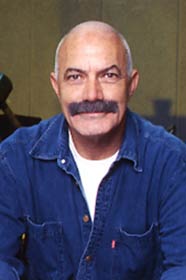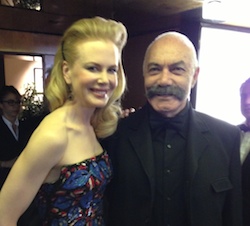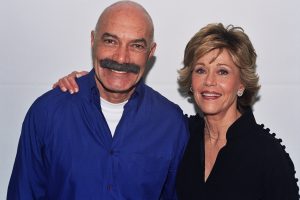DreamWorks and Red Hour Films, Ben Stiller and Stewart Cornfelds production company, brought in producer Eric McLeod, who had recently served as executive producer on the back-to-back productions of Pirates of the Caribbean: Dead Mans Chest and Pirates of the Caribbean: At Worlds End.
The team knew McLeod would be up for the challenge of shooting a film largely on location. This was bigger than any movie Ive ever been involved with in terms of scale, says Cornfeld. Eric had experience mounting major productions and was well-versed with working in exotic locations and with state governments and handling major set construction and explosions without harming the existing environment. He was the key to working out the logistics of this production.
With a script in place and the producing team assembled, the filmmakers recruited costume designer Marlene Stewart (“JFK,” “True Lies”) to manage regular wardrobe needs and to research and acquire accurate Vietnam-era military uniforms, as well as to design hip-hopper Alpa Chinos clothing line. Stiller and Cornfeld also recruited award-winning cinematographer John Toll (Braveheart, The Thin Red Line) and production designer Jeff Mann (“Transformers”) to help bring their vision to life.
“We initially considered shooting in Southern California to double for Vietnam and Burma/Myanmar in Southeast Asias Golden Triangle,” explains producer McLeod. “But all of us wanted a unique, lush, and different look to this film, and thats what Kauai offered.”
Kauai Island
A frequent destination for movie and TV crews, the 32-mile wide island of Kauai has been utilized over the years for such notable films as South Pacific and the Costa Rica game preserve in Steven Spielbergs Jurassic Park. Kauais various jungles, rivers, cliffs, waterfalls and other diverse terrains provided the crew of Tropic Thunder with multiple locations to mimic the films Southeast Asian locales and added an important realism factor that wouldnt have been possible in California. In total days, scope of filming and manpower, Tropic Thunder is the largest production ever staged on the island.
Place like Golden Triangle
Production designer Jeff Mann recalls that early in pre-production he and Stiller spent up to 25 hours over the course of six to eight weeks in a helicopter flying over the island looking for film locations, primarily the Hot LZ (landing zone) and the Flaming Dragon compound. We were looking for mountain ranges and environments that didnt feel recognizably Hawaiian–without the red earth and vertical ridges of the Na Pali Coast, Mann says. We needed to discover someplace that felt more like the Golden Triangle.
McLeod compares the films massive six-month pre-production process to adult adventure camp. He recalls, As most of the movie was shot on Kauai, we scouted by helicopter, by boat, by ATV. We wanted unique locations, places that hadnt been shot before. That required more work on our end, but in the end we found everything we needed and it was well worth the work.
Seven Locations
The movies exterior filming took place at seven locations primarily on Kauais northern and eastern sides before relocating back to Los Angeles for the Los Angeles locales and various interiors, which were primarily filmed on legendary Stage 12 at Universal Studios in Universal City, California (where, coincidentally, scenes from the Kauai-based production of Jurassic Park were also shot).
Starting with the first day of filming, Stiller led the cast and crew in filming a major battle scene for the fictional epic war film. Reminiscent of memorable war scenes in films from Apocalypse Now to Saving Private Ryan, this is where we first meet the heroes of the film-within-a-film.
The Hot LZ
The movies two major set pieces, the Hot LZ and Flaming Dragon Compound, were both shot on Kauai. The Hot LZ was situated on an expansive valley of tropical land, part of the privately-owned 40,000-acre Grove Farm property in Kauais county seat of Lihue. A few miles inland, across rocky, winding roads, was the Flaming Dragon Compound where the movies final action sequence takes place. The expansive set was built over several months at the edge of Mount Waialeale, a site that is noted for having 350 rainy days per year more rain than any other place in the world.
We had to deal with a lot of rain and a lot of mud, says Jack Black. But the locations looked great and they really added to our scenes. When you arrived on set, you kind of knew you werent making a typical comedy or a typical action film, and I think when people see the film theyll understand why Ben picked those locations.
We were actually looking at one possible location for the compound when, all of a sudden, Ben and Jeff Mann said, What about down there recalls producer McLeod. With that, the crew hiked down a cliff and found a couple of hydroelectric plants from the 1930s. Says Mann, Since the hand of man had already been here and excavated part of the property, it afforded us a road to get in and out. We selectively cleared some of the vegetation to create space for the set, but we were careful not to upset the visual balance of the environment.
The filmmakers brought in construction crews from Oahu and Los Angeles to widen the road for film production trucks, trailers and the other equipment needed to support the cast, crew and hundreds of technicians. Sets were then built, including a working hundred-foot wooden bridge leading into the compound. This bridge plays an integral role in the movies finale, so Mann and his team worked with a structural engineer on its construction. The whole thing took a little over three months, says Stiller. The bridge is my favorite because its something that was conceived in a drawing, was integral to the story, and Jeff totally pulled it off. It makes for a great ending to those scenes in the compound.
When we first went out there to rehearse I realized what a drive it was, remembers Robert Downey. Anyone can attest to the fact that it was just insane. It didnt seem like there was any good reason why we should be shooting here. We couldve just gone off the side of a major thoroughfare somewhere and made it look like this. But the truth is, we couldnt have because this was so remote and so complete in its realism and isolation. It was so tough and so knee-deep in mud and rain, but we were blessed because there wasnt a day that we didnt enjoy, which is so rare. Oftentimes when you go into those situations or locations you think its going to be hell, but this was a very enjoyable purgatory for a month or two.
Water Buffalo
One cast member had very few complaints about shooting in Hawaii, never letting it get in the way of her own agenda on the set. The filmmakers found Bertha, the water buffalo that Blacks character rides, in Texas and flew her to Kauai on a special plane. But about midway through filming, everyone was in for a big surprise. One day the trainer called us and said, Oh, by the way, Bertha cant work because when we showed up at the corral this morning, she had a calf, recalls producer McLeod. We didnt know she was pregnant. No one knew she was pregnant. Bertha having this baby was definitely kind of a humorous morale booster for everyone. In honor of Jack Black, the animal trainer named Berthas baby Little Jack.










